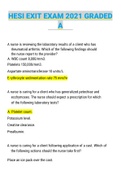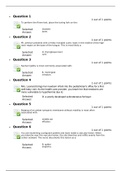Tentamen (uitwerkingen)
Onderhandelingsanalyse
- Instelling
- Vrije Universiteit Amsterdam (VU)
Dit is het tentamen wat in studiejaar moest worden gemaakt voor het vak Negotiations als onderdeel van het vak Goederen- en Contractenrecht. Het is de onderhandelingsanalyse die moest worden gemaakt als tentamen. Dit document kan dienen als voorbeeld. Het zijn geen aantekeningen of vragen/antwoord...
[Meer zien]










